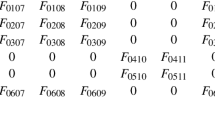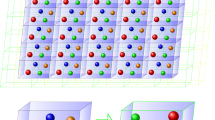Summary
A modified version of the macroscopic Maxwell theory is developed with the purpose of removing some of the current contradictions and inconsistencies. One of the crucial problems of the current electromagnetic theory concerns the concept of energy. It appears that energy which has a clearly defined physical significance in all fields of physics has not been properly incorporated into the Maxwell-Lorentz theory. Therefore, the electromagnetic energy in a dissipative system as interpreted in the current version of the theory is not « energy » in the same sense as one usually interprets this concept in classical mechanics. The main object of this investigation is, therefore, to clarify the meaning of energy and to suggest a revised version in which the concept of energy is incorporated in accordance with the logical requirements of the theory. The proposed version is based on an assumption that the « electrical energy » both in nondissipative and dissipative media has a meaning only to the extent to which the electrical field theory can be developed as a theory of a dynamical system. This assumption leads to a formulation of a principle which states that the energy densityU e of an electrical field in an absorbing medium is determined solely by the electrical intensityE and is, therefore, independent of any parameter which represents absorption. The proposed version differs from the traditional theory in the interpretation of the dielectric constant and of conductivity. The dielectric constant is considered to be independent of conductivity in the sense that a change in conductivity does not produce a corresponding alteration of the dielectric constant. Part I of this investigation deals with the fundamentals of the proposed reformulated version. These fundamentals are then applied in Part II to the generalization of Brillouin’s theory of wave propagation and group velocity to absorbing media.
Riassunto
Si sviluppa una forma modificata della teoria macroscopica di Maxwell con l’intento di rimuovere alcune delle sue contraddizioni ed inconsistenze. Uno dei problemi cruciali della teoria elettromagnetica della corrente riguarda il concetto di energia. Sembra che l’energia, che ha un ben definito significato fisico in tutti i campi della fisica, non sia stata opportunamente incorporata nella teoria di Maxwell e Lorentz. Perciò l’energia elettromagnetica in un sistema dissipativo, così come è interpretata nella forma corrente della teoria, non è « l’energia » nello stesso senso in cui comunemente si interpreta questo concetto nella meccanica classica. L’intento principale di questo articolo è perciò quello di chiarire il significato dell’energia e di suggerire una forma corretta in cui il concetto di energia venga incorporato in accordo con le esigenze logiche della teoria. La forma proposta si basa sull’ipotesi che « l’energia elettrica » in entrambi i mezzi, dissipativo e non, abbia un significato solo nella misura in cui la teoria di campo elettrico si possa sviluppare come una teoria di un sistema dinamico. Questa ipotesi porta alla formulazione di un principio che afferma che la densità di energiaU e di un campo elettrico in un mezzo assorbente è determinata solamente dall’intensità elettricaE ed è perciò indipendente da qualunque parametro che rappresenti l’assorbimento. La forma proposta differisce dalla teoria tradizionale nell’interpretazione della costante dielettrica e della conduttività. Si considera la costante dielettrica indipendente dalla conduttività nel senso che una variazione della conduttività non produce un corrispondente cambiamento della costante dielettrica. La parte I di questo studio tratta gli aspetti fondamentali della riformulazione proposta. Successivamente nella Parte II questi fondamenti verranno applicati alla generalizzazione della teoria di Brillouin della propagazione delle onde e della velocità di gruppo ai mezzi assorbenti.
Реэюме
Раэвивается модифицированный вариант макроскопической теории Максвелла с целью устранить некоторые токовые противоречия и несовместимости. Одна иэ критических проблем злектромагнитной теории тока касается концепции знергии. Окаэывается, что знергия, которая имеет четко определенное фиэическое эначение во всех полях фиэики, не была введена надлежашим обраэом в теорию Максвелла-Лорентца. Следовательно, злектромагнитная знергия в диссипативной системе, как интерпретируется в токовом варианте теории, не есть « знергия » в том смысле, как обычно интерпретируют зто понятие в классической механике. Позтому основная цель зтого исследования прояснить эначение знергии и пред-ложить улучщенный вариант, в котором понятие знергии вводится в соответствии с логическими требованиями теории. Предложенный варинт основывается на пред-положении, что « злектрическая знергия » и в недиссипативной и в диссипативной средах имеет смысл только в пределе, к которому теория злектрического поля может распостранена, как теория динамической системы. Это предположение приводит к формулировке принципа, который утверждает, что плотность знергииU e злектри-ческого поля в поглошаюшей среде определяется, исключительно, злектрической интенсивностьюE и, следовательно, не эависит ни от какого параметра, который описывает поглошение. Предложенный вариант отличается от традиционной теории в интерпретации дизлектрической постоянной и проводимости. Считается, что дизлектрическая постоянная не эависит от проводимости в том смысле, что иэме-нение в проводимости не приводит к соответствуюшему иэменению дизлектрической постоянной. Первая часть зтого исследования посвяшена основным принципам предложенного переформулирова нного варианта. Затем, во Второй части зти прин-ципы применяются к обобшению теории Бриллюзна для распространения волн и групповой скорости в поглошаюшей среде.
Similar content being viewed by others
References
H. A. Lorentz:The Theory of Electrons and Its Application to the Phenomena of Light and Radiant Heat, II edition (Leipzig, 1916), p. 132. (A course of lectures delivered at Columbia University, New York, March and April 1906).
J. Neufeld:Phys. Rev.,152, 708 (1966).
See for instance,I. E. Tamm:Osnovy Teorii Elektrichestva (Foundations of the Theory of Electricity) (Moscow, 1949), p. 353.
I. E. Tamm:Osnovy Teorii Elektrichestva (Foundations of the Theory of Electricity) (Moscow, 1949), p. 419.
SirG. G. Stokes:Smith’s Prize Examinations (Cambridge, 1876).
Lord Rayleigh:Proc. London Math. Soc.,9, 21 (1877);Nature,21, 382 (1881);25, 52 (1881).
L. Brillouin:Congrès International d’Electricité, Paris, 1932, vol.2 (Paris, 1932), p. 739;Wave Propagation and Group Velocity (New York, 1960).
See alsoL. D. Landau andE. M. Lifshitz:Electrodynamics of Countinuous Media (Oxford, 1960), p. 254.
V. L. Ginzburg:The Propagation of Electromagnetic Waves in Plasmas (London, 1964), p. 244.
V. L. Ginzburg:Izvestia Vysshikh Uchebnykh Zavedenii, Radiofizika,4, 74 (1961) (English translation:The Propagation of Electromagnetic Waves in Plasmas (London, 1964), p. 477).
See the most recent edition of ref. (9) (in Russian),viz. V. L. Ginzburg:Raspostranienie Elektromagnitnykh Voln v Plazme, II edition (Moscow, 1967), p. 364.
See, for instance,H. Goldstein:Classical Mechanics (Reading, Mass., 1950).
R. B. Lindsay andH. Margenau:Foundations of Physics, III edition (New York, 1963), p. 126.
R. B. Lindsay:Concepts and Methods of Theoretical Physics (New York, 1951), p. 52.
See alsoL. A. Pars:A Treatise on Analytical Dynamics (New York, 1965), p. 33.
E. T. Whittaker:A Treatise on the Analytical Dynamics of Particles and Rigid Bodies (Cambridge, 1960), p. 227.
W. Yourgrau andS. Mandelstam:Variational Principles in Dynamics and Quantum Theory, II edition (London, 1960), p. 92.
H. Goldstein:Classical Mechanics (Reading, Mass., 1950), p. 21;J. W. S. Rayleigh:The Theory of Sound, vol.1 (New York, 1945), p. 102.
H. von Helmholtz:Ann. der Phys.,154, 582 (1875).
J. Neufeld:Phys. Rev.,152, 708 (1966), eq. (A.6).
This standard procedure is outlined in any textbook on electromagnetic theory. See, for instance,A. Sommerfeld:Electrodynamics (New York, 1952), p. 25.
D. W. Theobald:The Concept of Energy (London, 1966);M. Jammer:The Encyclopedia of Philosophy, edited byP. Edwards, vol.2 (New York, 1967), p. 511.
M. Planck:Theory of Electricity and Magnetism (London, 1932).
SeeWebster’s Third New World International Dictionary of the English Language, unabridged (Springfield, Mass., 1963).
See, for instance,American Institute of Physics Handbook, edited byD. E. Gray (New York, 1957), p. 5-2;Handbook of Chemistry and Physics, edited byR. C. Weast, XLVI edition (Cleveland, O., 1968), p. F58.
A few illustrations of the misuse of the term « dielectric constant » have been pointed out byJ. Neufeld:Phys. Rev.,123, 1 (1961);Journ. Appl. Phys.,34, 2549 (1963).
Author information
Authors and Affiliations
Additional information
Research sponsored by the U.S. Atomic Energy Commission under contract with Union Carbide Corporation.
Rights and permissions
About this article
Cite this article
Neufeld, J. Revised formulation of the macroscopic maxwell theory. Nuovo Cimento B (1965-1970) 65, 33–69 (1970). https://doi.org/10.1007/BF02711612
Received:
Published:
Issue Date:
DOI: https://doi.org/10.1007/BF02711612




